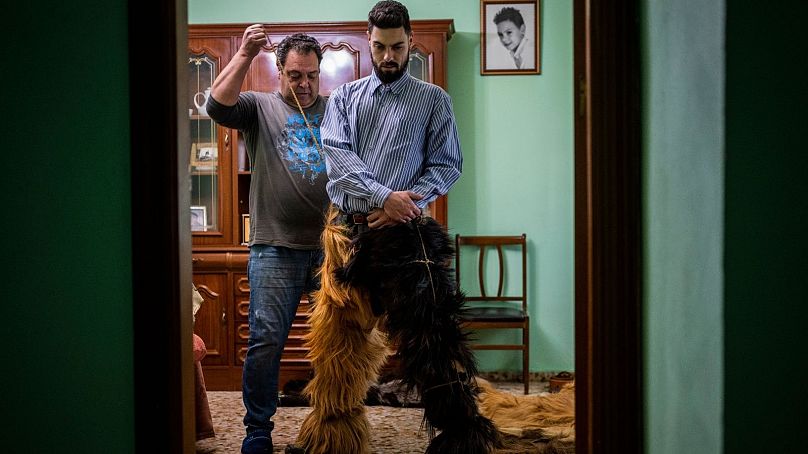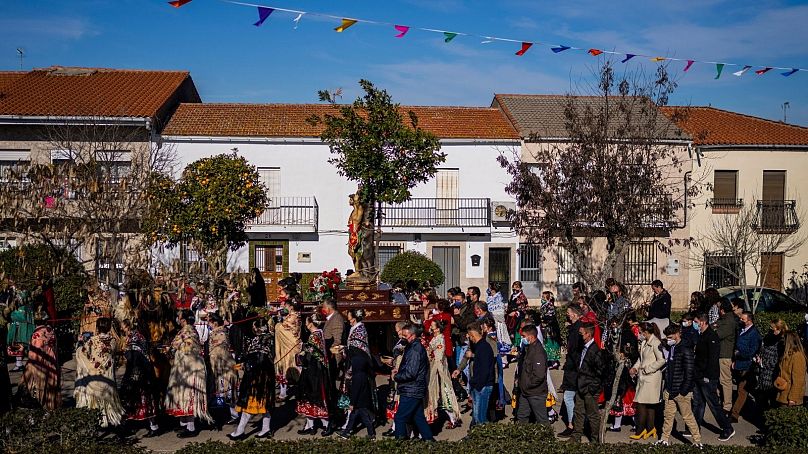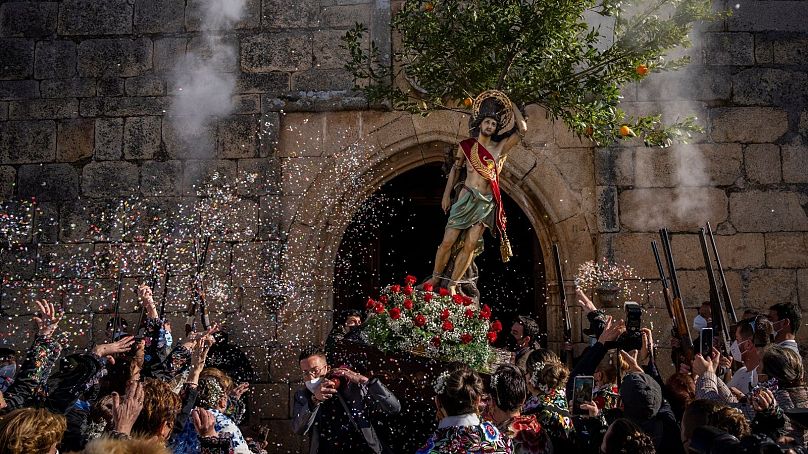The tradition is a meeting of old and new as the pagan fertility figure takes part in a parade for local patron St Sebastien.
This year saw the return of the 'Carantoñas' to a small Spanish town in the continuation of a centuries old pagan tradition interrupted by the pandemic.
Hours before dawn in Acehuche, a town in Spain's western Extremadura region, a group of youngsters set off fireworks and beat drums to beckon the monster home.
The noise awakens residents for one of the biggest dates in the local calendar: the three-day traditional celebration of the fur-covered characters known as 'Carantoñas'.
The ritual is a meeting of paganism and catholicism, as the fur covered beasts have roots in pre-Christian traditions of fertility that were incorporated by the local church. The ancient festival marks Acehuche's patron, St. Sebastian, a martyr killed by the anti-Christian Romans.
The local custom is back after a cancellation in 2021 due to a surge in coronavirus cases, and the festival went ahead in January, with an added mask-mandate due to omicron.
Elaborate costumes are central to partaking in the custom
For the annual parade, women dress up as 'Regaoras,' wearing colourful embroidered skirts and shawls and decorating intricate hairstyles with flowers.
Meanwhile, a few dozen men gather in a garage to cover themselves in animal skins and fur to transform into 'Carantoñas'.
The handmade costumes can weigh more than 20 kilograms and hopefuls must be aged over-16 to play the part of the monster.
On the second day of the celebration, as the image of St. Sebastian is carried in a procession over rosemary-covered pavements, the 'Carantoñas' bow to the patron saint and the 'Regaoras' cover the sculpture in confetti as traditional songs are sung and drums are played.
The celebration concludes in a musical procession throughout Acehuche
"All the songs we play have been recovered by oral tradition," explains Jaime Garrido, one of the musicians partaking in the parade.
"Some are common songs in the region and others are specific to this festival."
The procession takes the saint's figure to face a chosen member of the local brotherhood who thanks St. Sebastian for keeping the town safe and healthy one more year.
With the sculpture back inside the church, a new character emerges in the crowd outside: the 'Vaca-Tora,' a monstrous figure with enormous horns and an oversized loud cowbell that ushers away both beasts and parade-goers.
It is hoped the tradition will continue for many years to come, pandemics permitting.














